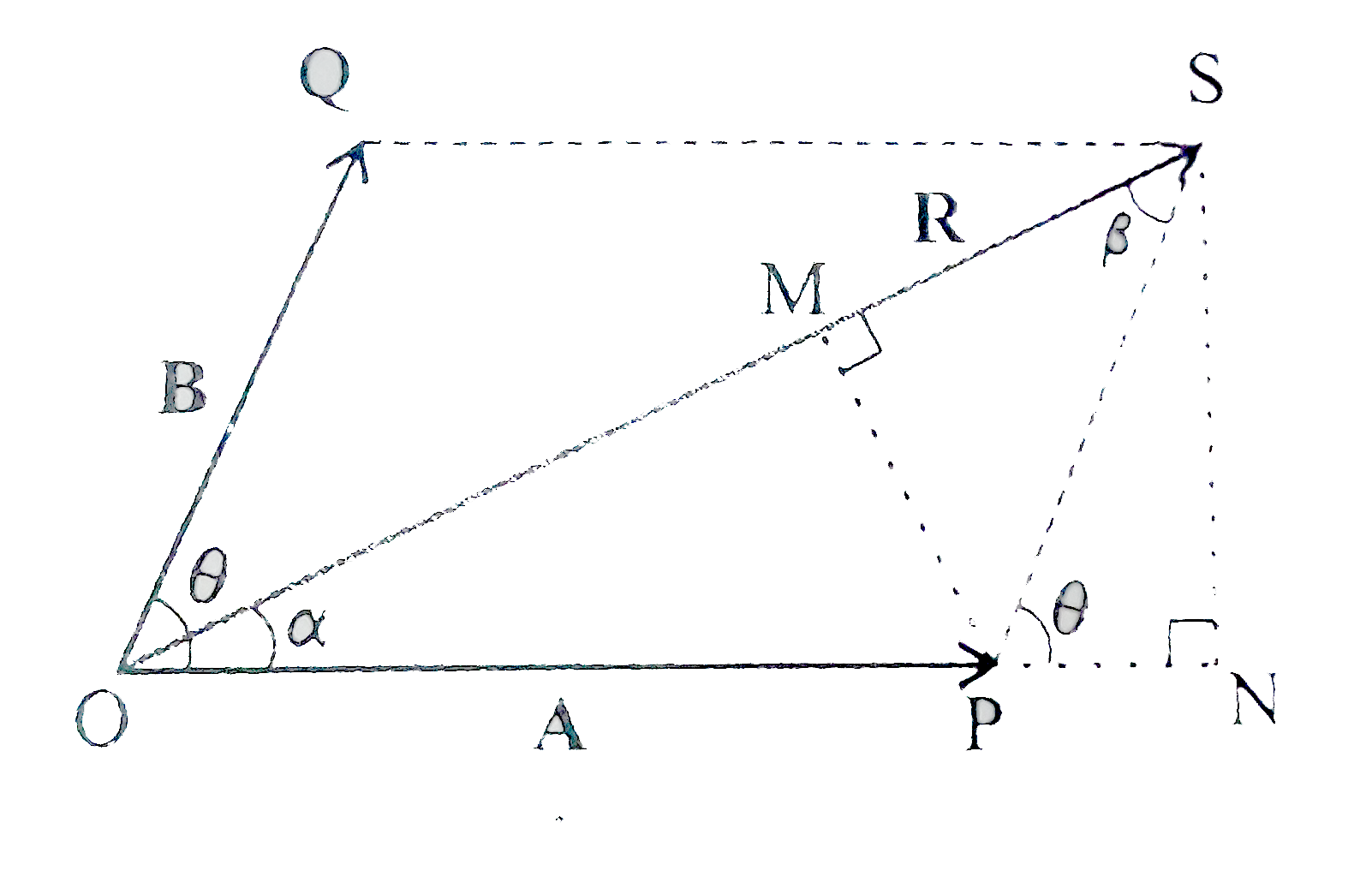The angle between A the resultant of (A+B) and (A−B) will be
0∘
tan−1(AB)
tan−1(BA)
tan−1(A−BA+B)
To find the angle between vector A and the resultant of (A+B) and (A−B), follow these steps:
1. Calculate the resultant vector:
Resultant=(A+B)+(A−B)
2. Simplify the resultant vector:
Resultant=A+B+A−B
Resultant=A+A
Resultant=2A
3. Determine the angle between A and 2A:
Since 2A is just a scalar multiple of A, both vectors are in the same direction.
4. Conclude the angle:
The angle between two parallel vectors is 0∘.
Therefore, the angle between A and the resultant of (A+B) and (A−B) is 0∘.
Resultant=(A+B)+(A−B)
Resultant=A+B+A−B
Resultant=A+A
Resultant=2A
Since 2A is just a scalar multiple of A, both vectors are in the same direction.
The angle between two parallel vectors is 0∘.
Topper's Solved these Questions
Similar Questions
Knowledge Check
- Question 1 - Select One
What is the angle between A and the resultant of (→A+→B)and(→A−→B) ?
Atan−1(AB)Btan−1(BA)Ctan−1(A+BA−B)Dzero - Question 2 - Select One
The angle between (→A×→B) and (→B×→A) is :
A0∘B45∘C90∘D180∘ - Question 3 - Select One
The angle between two vector A and B is θ. Vector R is the resultant of the two vectors. If R makes an angle θ2 with A, then
AA=2BBA=B/2CA=BDAB=1
Find the magnitude and direction of the resultant of two vectors A and B in the terms of their magnitudes and angle θ between them.
 View Solution
View SolutionIf √A2+B2 represents the magnitude of resultant of two vectors (A+ B) and (A - B),then the angle between two vectors is
View SolutionLet the angle between two non - zero vectors →A and →B be 120∘and its resultant be →C.
View SolutionLet the angle between two non-zero vectors →A and →B be 120∘ and its resultant be →C then:
View SolutionIf the angle between the vectors →aand→b is π3. Then what is the angle between −5→aand6→b ?
View Solution

